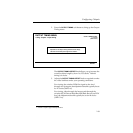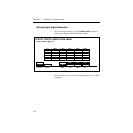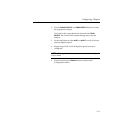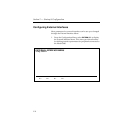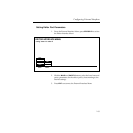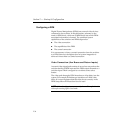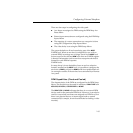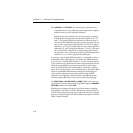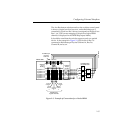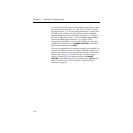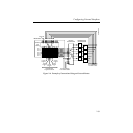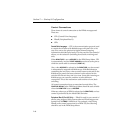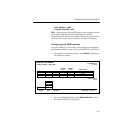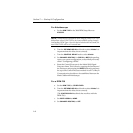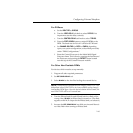
2-36
Section 2 — Startup & Configuration
Both KSCOPE and KRYSTAL are selections for pooled devices.
A pooled device is one which provides acquisition of logical
channels from a pool of physical channels.
Kaleidoscope is a pooled device. As an example, consider a
Kaleidoscope having 5 physical channels named A, B, C, D,
and E. The pooled channels are shared by different users. A
user may build a Kaleidoscope effect using 3 channels. On one
day he may acquire physical channels C, D, and E as logical
channels 1, 2, and 3; on another day he may acquire physical
channels B, C, and D as logical channels 1, 2, and 3. The same
effect will perform identically on both configurations since
the operator’s view of the system is the logical arrangement of
channels (1, 2, 3), not the physical channels used.
In systems with multiple DPM channels, it is desirable to have a
predictable relationship between aux buses and DPM channels
(e.g., aux bus 1 feeding DPM channel 1, aux bus feeding channel
2, etc.) and to have a particular switcher crosspoint button always
select the same DPM channel return input. For a fixed device
(such as the DPM-700) this relationship is achieved by cabling
alone. For a pooled device, such as Kaleidoscope, the Model 3000
achieves predictable DPM channel routing by maintaining an
extra level of mapping between physical and logical DPM
channels. This mapping, termed Switcher Input Routing and
Switcher Output Routing, is discussed on the following page.
For
DPM TYPEs of OTHER FIXED or NONE (DPMs which are not
pooled and do not have Input and Output Routing), the CHANNEL
ROUTING
selection should be OFF.
Kaleidoscope changes its logical-to-physical channel mapping,
depending on the order in which channels are acquired from its
pool. Switcher output routing maps a physical aux bus to a logical
aux bus so that the logical aux bus number corresponds with the
DPM’s logical channel.




